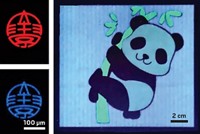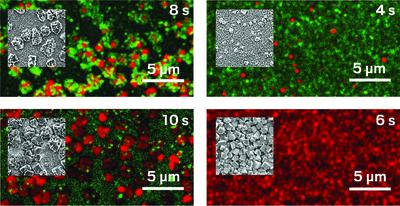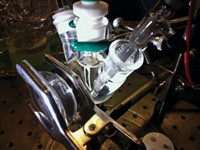Advertisement
Grab your lab coat. Let's get started
Welcome!
Welcome!
Create an account below to get 6 C&EN articles per month, receive newsletters and more - all free.
It seems this is your first time logging in online. Please enter the following information to continue.
As an ACS member you automatically get access to this site. All we need is few more details to create your reading experience.
Not you? Sign in with a different account.
Not you? Sign in with a different account.
ERROR 1
ERROR 1
ERROR 2
ERROR 2
ERROR 2
ERROR 2
ERROR 2
Password and Confirm password must match.
If you have an ACS member number, please enter it here so we can link this account to your membership. (optional)
ERROR 2
ACS values your privacy. By submitting your information, you are gaining access to C&EN and subscribing to our weekly newsletter. We use the information you provide to make your reading experience better, and we will never sell your data to third party members.
Materials
Activating Titanium Dioxide With Visible Light
by Journal News and Community
January 13, 2014
| A version of this story appeared in
Volume 92, Issue 2
Many scientists view titanium dioxide as an attractive, low-cost photocatalyst for a variety of applications, including water purification, water splitting, and solar power. But there is a snag: The material catalyzes reactions mainly in response to ultraviolet light. Now, researchers in Singapore have found a way to dope the surface of TiO2 with nitrogen so that the material responds to visible light, drastically increasing its photocatalytic activity (J. Phys. Chem. C 2013, DOI: 10.1021/jp408798f). Previously used doping methods, such as magnetron sputtering and high-energy ion bombardment, create defects in the bulk TiO2 that reduce the photocatalytic efficiency of the material. But directing a low-energy beam of nitrogen atoms at TiO2 deposits nitrogen on the surface only and keeps the material free of defects, says Junguang Tao, a physicist at the Institute of Materials Research & Engineering, in Singapore. He and his team found that TiO2 doped in this way showed photoactivity when illuminated with visible light, unlike the undoped TiO2. What’s more, the surface-doped TiO2 showed greatly enhanced photoactivity under UV illumination, compared with TiO2 doped via other methods.





Join the conversation
Contact the reporter
Submit a Letter to the Editor for publication
Engage with us on Twitter